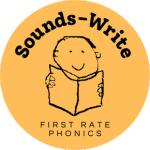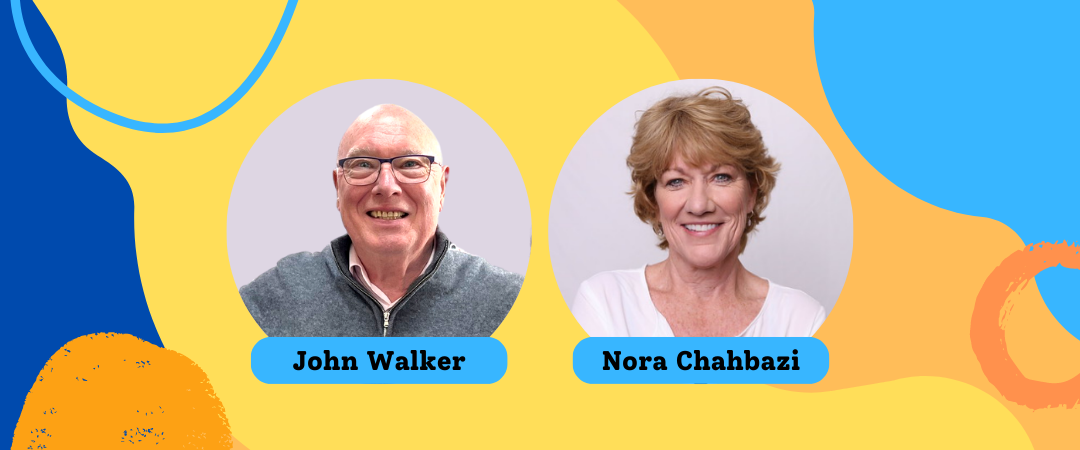Speech-to-print with Nora Chahbazi and John Walker
By Laura Walker, Content Manager at Sounds-Write
Last month, I had the privilege of recording a podcast Nora Chahbazi and John Walker for The Sounds-Write Podcast. Nora is the founder of EBLI, a phonics approach based in the US, and John is the founder of our very own phonics approach, Sounds-Write. John and Nora discussed their strikingly similar backgrounds in the worlds of phonics, the similarities and differences between their approaches and, of course, speech to print.
I’ve put together a condensed version of their conversation on speech-to-print. They talked about so much more than that, so you can listen to the full episode here.
If you’re interested in the topic of speech-to-print more specifically, we recently hosted a symposium on this very topic, the Sounds-Write Symposium on Speech to Print. Though the event is over, you can still get access to the talks from over 30 literacy and education experts for just $149USD by clicking here. Anyway, on with the interview…
Q: Nora, could you talk a little bit about your background and your work at EBLI?
Nora: I am actually a neonatal intensive care nurse by education. I have two degrees in nursing and I came to literacy back in the 1990s because of my own child’s struggles with reading. She was in gifted and talented in math, a very bright child, but a year below grade level in reading in second grade. So, that kind of changed the whole trajectory of my life and put me on this path to literacy.
I opened a reading centre in 1999. I created EBLI in 2003 and have trained teachers, classroom teachers and intervention teachers from all over the world. We have trained people in 37 states and nine different countries, which is very exciting.
So, my mission really at the core is to prevent the suffering my daughter experienced and that’s being experienced by millions of kids and adults. I always say that our method is to put a fence at the top of the cliff and teach kids to read from the beginning, as opposed to putting an ambulance at the bottom for the millions that have fallen off the cliff and need intervention and remediation.
So I have devoted my life to literacy and improving literacy and really our tagline is teaching the world to read. That is my dream and my goal.
Q: Sounds-Write has a pretty similar timeline. We also started in 2003, funnily enough. So, John, why don’t you tell us who you are and what Sounds-Write is?
John: Yes, I was gonna say that Nora’s ambulance metaphor is great and it does seem that we’ve been running in parallel all these years. Certainly, we started off at pretty much the same time. I think I started my reading centre in something like 1998. I was teaching literature and sociolinguistics until that time at university. And then when I was teaching at Warwick University teaching a course on post-colonial literature in English on a master’s program, I asked myself: who’s gonna benefit from the kind of experience I have more? These very, very clever kids at Warwick or kids that can’t read?
So, I made the switch at that time. Like you, Nora, I started off teaching small groups and one-to-one using Phonographics. Because Phonographics didn’t offer a whole class alternative, we started to work on developing a whole class program so that we could train teachers right from the start. It’s all very well putting these sticking plasters on all over the place, but, actually, you need to get to the root of the problem. I’m pretty sure you feel the same way, Nora.
Nora: Yes. The trauma that’s experienced in the angst and anxiety that builds up for people that have struggled is tremendous. So, as you say, we’ve got to get into the classrooms and teach an approach that works for everyone from the beginning.
Q: For anyone who might not be completely familiar with the term, would you talk a bit about what exactly it means to go from speech to print in a phonics program?
John: What do children learn naturally? What is it that you don’t have to teach and what’s biologically primary? All kids everywhere in the whole world learn to speak and they learn to listen. You don’t have to go to school to learn to speak. In fact, the very idea is absurd. What you do have to do, though, is you have to go to school to learn your writing system. All children need to be inducted into how their writing script or their writing system works. Do you want to take it from there, Nora?
Nora: Yeah. I always say that when somebody has written to you, whether they wrote a book 300 years ago or whether they wrote an email to you today, their speech is down now in print. That’s what print is. It’s what we say written down. And so speech-to-print approaches take advantage of that. Almost all kids come to school being able to talk. So, we use what they already know. As John says, speech is biologically primary. It’s what they already know. What is biologically secondary, or things that have to be taught, is the code that our writing system uses to match these sounds in your words to print. So, when we match the sounds to print, then students, especially when I’m teaching high schoolers or adults, they’re like, “Wait a minute, this makes so much sense. Why didn’t anybody ever teach me this before?”
And for me, the key is to start with what you already know. We’re leading with speech, whereas traditional phonics is leading with something that’s manmade (our writing system).
They start with letters and then try to shove our speech into it. It just doesn’t work very well, because then you have to use things like ‘silent letters’. No letter has ever spoken that I’ve known of. Right? They’re all silent. Letters are just symbols that represent sounds. So, when you use terms like ‘silent letters’, then kids who are very literal at a young age, they’re like, “What’s going on here?” So, we don’t want to confuse kids and we don’t have to when we start with what they already have, which is their speech. And I think it’s so liberating for all learners to be able to understand that.
John: When I do special needs teaching and I’m doing an intervention in my reading centre, I always have the parent sit in as well so that the parent how it works too. But, parents say, “God, this is really straightforward. This is really simple.”
Q: There are very few phonics programs that take that orientation from speech to print. So, I wanted to get your opinion on why you think that is. Why aren’t more people doing this?
Nora: I think that the traditional phonics approach of leading with the letter is a habit. It’s been around for decades.
You know, I think of this story where this woman would cut the ends off of her ham before she’d cook it. And her husband said, “Why do you do that?” And she said, “Because my mom always did.” So, he asked the mom, “Why do you do that?” And she’s like, “Well, because my mom always did.” So he asked the grandma, “Why’d you cut the ends off the ham?” And she said, “Well when we were married, we didn’t have many pans. And so, the pan wasn’t long enough to fit the ham, so I’d cut the ends off.” So everybody was doing it because she had done it, not knowing the reason for doing it. So, I think that a similar thing has happened with phonics. Phonics has been taught with the print leading the instruction since Noah Webster and before.
Another example I gave recently was with the Wright Brothers and aviation. We should be thankful to them, but do we want to fly places on a Wright Brothers plane? No. It has evolved since then. We want to fly on the planes that are going to get us there faster and probably less likely to crash.
Are we thankful for what happened a hundred years ago for the alphabetic system and print-first instruction? Absolutely. They were pioneers, but things have evolved and we know differently. But change is hard.


